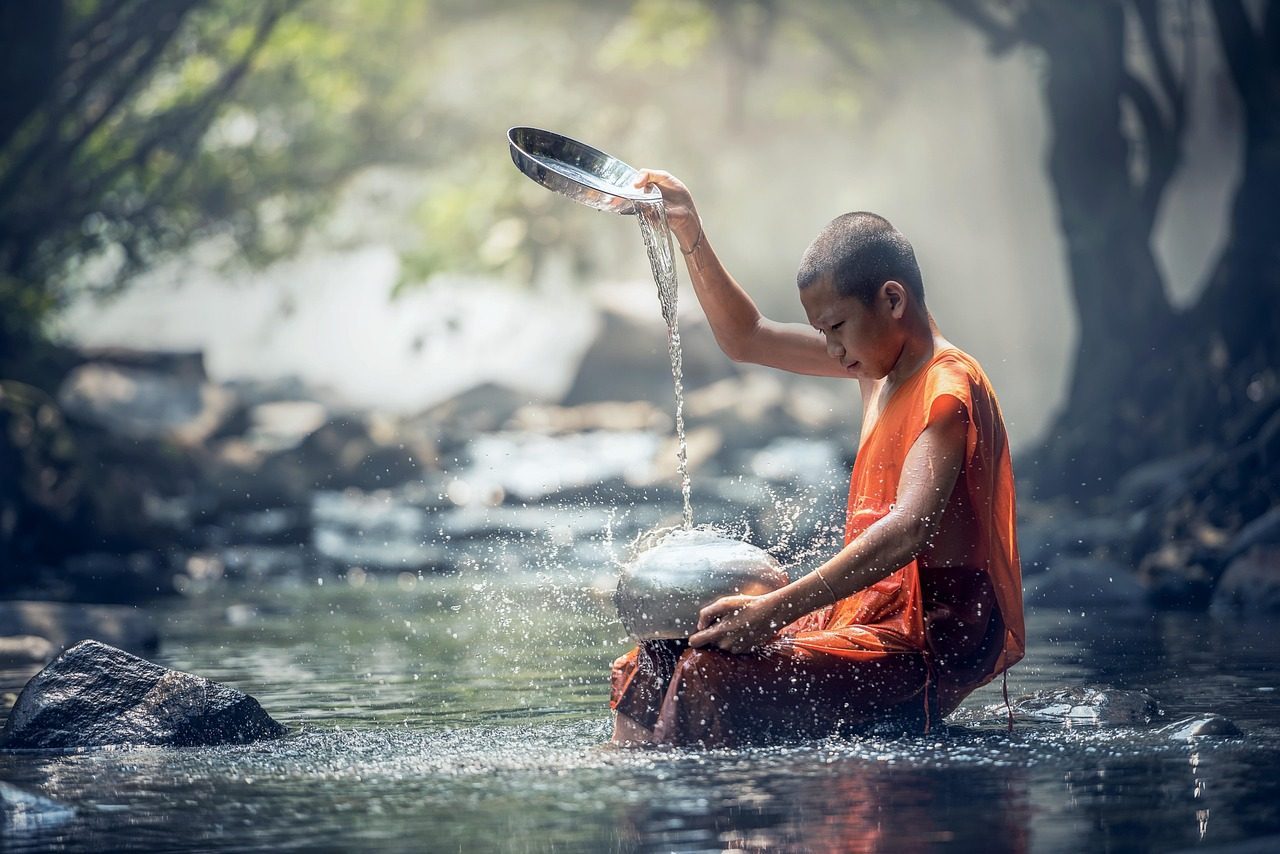What Is Buddhist Tantra?
Buddhist Tantra isn’t a quick fix for your spiritual struggles—it’s a hands-on path transforming your daily chaos into clarity using vivid visualizations, mantras, and rituals. You engage with powerful deities not as distant icons, but as reflections of your own enlightened nature, learning to embrace tough emotions like anger or fear as fuel for growth. It’s intense, deeply psychological, and demands a teacher’s guidance. If you’re ready to see your challenges as allies, there’s a lot more waiting ahead.

Origins and Historical Development of Buddhist Tantra
Though tracing the exact birth of Buddhist Tantra feels like chasing shadows, scholars generally agree it took shape in India between the 3rd and 6th centuries CE. You might wonder, what is Buddhist Tantra, exactly? Simply put, it’s a rich, complex spiritual path blending meditation, ritual, and symbolism to open freedom from suffering. The Buddhist Tantra definition involves secret teachings that emerged alongside mainstream Buddhism but with a sharper focus on transformation through vivid practices. Imagine discovering texts like the Awakening of Mahāvairocana Tantra, dating back to around 680 CE—early evidence of this dynamic tradition. Over centuries, it absorbed influences from neighboring traditions, evolving into a diverse, powerful toolkit for liberation. If you’ve felt stuck in rigid teachings, Buddhist Tantra offers a revitalizing, intense way to engage your freedom-seeking spirit.
Core Philosophical Principles of Tantric Practice
If you’ve ever felt stuck trying to separate your “good” experiences from the “bad” ones on your spiritual path, Buddhist Tantra flips that idea on its head. It shows you how every moment, even frustration or fear, can fuel your freedom. Here’s how the core principles work for you:
- You learn to “take the result as the path,” meaning you embody your enlightened nature right now, not someday far off.
- You realize that wisdom and compassion aren’t separate—they merge, guiding your choices with clarity and heart.
- You use visualization, mantras, and rituals to transform ordinary life into a sacred journey, where nothing is wasted, and everything teaches.
This approach invites you to see life’s chaos as a powerful ally, not your enemy.
Structure and Stages of Tantric Path
You might feel overwhelmed by the idea of starting a tantric path, especially when it seems like a maze of rituals, mantras, and visualizations. The journey actually begins with simple, foundational steps—like guru yoga and ngondro—that build your bond with a teacher and set your mind right. Your teacher then empowers you, giving permission to immerse yourself in specific practices, so you’re never just guessing. You move through stages: first, creating vivid images in your mind; then, recognizing the emptiness beneath it all. Along the way, you learn to transform your frustrations into wisdom, keeping a clear, respectful view of your teacher and community. Ultimately, this structure aims to help you awaken your own buddhanature—yes, often within your lifetime—freeing you from inner turmoil.
The Role of Deities and Visualization in Tantra
Anyone starting tantric practice might find the idea of visualizing deities a bit strange or even frustrating at first. You’re asked to imagine yourself as a deity like Chenrezig, embodying wisdom and compassion—sounds odd, right? But this practice helps you transform everyday experience into something sacred. Here’s how it works:
- You visualize the deity, connecting deeply with your own buddhanature, which represents your highest potential.
- You repeat mantras linked to these deities, letting their spiritual energy awaken parts of your mind.
- Finally, you dissolve the deity into emptiness, resting in the reality beyond duality, which frees you from limiting views.
It’s a challenging but powerful way to break free from your usual mental patterns and step into true freedom.
The Intersection of Psychology and Spirituality in Tantra
Visualizing deities and chanting mantras might feel like a mental circus, but there’s more going on beneath the surface—especially when emotions crash the party. In Buddhist tantra, your anger or sadness isn’t a problem to squash but energy to transform. You learn to recognize these feelings as clues to your inner world, not enemies. Tantra doesn’t just ask you to meditate; it invites you to move, create, and engage physically, blending your body and mind. This approach respects your emotional complexity, especially if you’ve wrestled with Western ideas that split psychology from spirituality. So, when frustration bubbles up during practice, tantra encourages you to explore its roots, turning emotional chaos into freedom. It’s messy, real, and remarkably freeing—if you’re willing to plunge into.

Conclusion (What Is Buddhist Tantra?)
You might feel overwhelmed by Buddhist Tantra’s complexity, like trying to catch a flickering flame in the dark. But remember, it’s not about mastering every ritual or deity at once. Instead, it’s a journey—layer by layer—where your mind and spirit gradually align. So, when frustration hits, breathe. Tantra invites you to transform confusion into clarity, using ancient wisdom as your unexpected guide through today’s chaotic maze.
